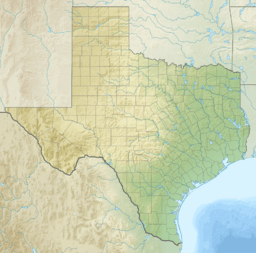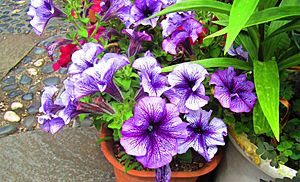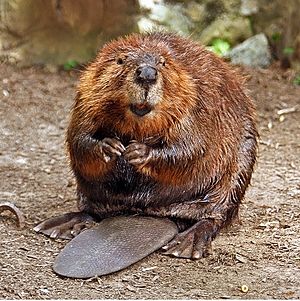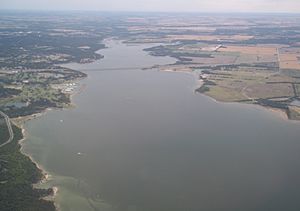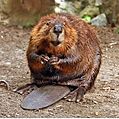Lake Waco facts for kids
Quick facts for kids Lake Waco |
|
|---|---|
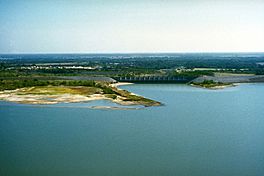
Aerial view of Lake Waco and dam (circa 1960s).
|
|
| Location | Waco, Texas, United States |
| Coordinates | 31°35′01″N 97°12′02″W / 31.58361°N 97.20056°W |
| Type | Reservoir |
| Primary inflows | Bosque River |
| Primary outflows | Bosque River |
| Basin countries | United States |
Lake Waco is a large, man-made lake located on the west side of Waco, in McLennan County, Texas. It's a reservoir, which means it's a lake created to store water. Lake Waco provides drinking water to many cities in the Waco area, including Waco itself, Bellmead, Hewitt, Robinson, and Woodway.
This important lake was formed by building a dam on the Bosque River. It holds about 79,000 acre-feet of water. The lake is managed by the U.S. Army Corps of Engineers, who make sure it serves its purpose for the community.
Contents
History of Lake Waco
The first dam for Lake Waco was built in 1930 by Callahan Construction Company. Its main jobs were to help control floods from the Bosque River and give Waco a steady supply of water.
As the city grew and flood threats increased, a new, stronger dam was needed. The Flood Control Act of 1954 allowed for a modern earthen dam to be built. The U.S. Army Corps of Engineers finished this new dam in 1965.
The new dam was much bigger, stretching over 24,000 feet long and standing 140 feet tall. This made the lake much larger, covering about 8,190 acres. The original dam cost $2.5 million, but the new one cost $53.4 million. In 2003, the lake's water level was raised by 7 feet to help store even more water.
How Lake Waco Works
Lake Waco was created where the North and South Bosque Rivers meet. These rivers are the main sources of water for the lake. Water then flows out of the dam's spillway back into the Bosque River, which eventually joins the larger Brazos River.
The lake's average surface area is about 7,712 acres, and it has over 60 miles of shoreline. The average depth is around 20 feet, but in some spots, it can be as deep as 85 feet.
The water level in Lake Waco usually stays around 460 feet above sea level. Before the new dam was built, Waco often faced serious floods and droughts. The new dam has been very successful in preventing major floods since it was completed.
Water Quality in Lake Waco
Lake Waco gets a lot of sediment (like dirt and sand) and nutrients from the rivers flowing into it. This can lead to a condition called eutrophication, where there are too many nutrients. This causes a lot of algae and other plants to grow.
The Bosque River, which feeds Lake Waco, often has high levels of nitrogen and phosphorus. These come from things like fertilizer runoff from farms. These extra nutrients can make the water cloudy, which can sometimes limit how much algae can grow because sunlight can't reach them.
Scientists regularly study Lake Waco's water to check things like nutrient levels, temperature, oxygen, and pH. They also take samples from the lakebed, which show that the bottom is mostly made of silt and clay from the rivers.
Nature and Wildlife at Lake Waco
Climate Around Lake Waco
Waco has a humid subtropical climate. This means it has hot, dry summers and mild winters with very little snow. The area gets about 35.9 inches of rain each year, usually over about 76 days. In July, the average high temperature is around 95°F, while in January, the average low is about 35°F.
Plant Life (Flora)
Lake Waco is home to a huge variety of plants. Students from Baylor University have helped identify many of them.
You can find many trees and shrubs here, like Box elder maple, different types of Sumac, Agarita, Roughleaf dogwood, Honeylocust, Pecan, Mesquite, and various Oak, Elm, and Ash trees.
The lake also has many flowering plants, such as Cocklebur, Giant goldenrod, and Papyrus. In the water, you'll see aquatic plants like Cattails, Pickerelweed, and Water lilies. Wildflowers like Horsemint, the Common sunflower, Texas bull nettle, and the Wild petunia also grow around the lake.
Animal Life (Fauna)
Lake Waco is a great place to see Texas wildlife. Many birds live here, including the Great blue heron, the Great egret, and Red-winged blackbirds, especially in the wetlands north of the lake.
You can find reptiles and amphibians along the streams and in the wetlands. These include Green treefrogs, American bullfrogs, Common snapping turtles, and various types of snakes. Other animals often seen around the lake are the American beaver and the White-tailed deer.
Many small creatures without backbones (invertebrates) also live here, like the Asian clam, Marsh ramshorn, Prairie rabdotus, and the Decollate snail. The lake is also full of fish, including different kinds of bass, trout, catfish, crappie, carp, gar, and sunfish. If you enjoy fishing, you can check the local fishing rules and records for Waco Lake.
Dealing with Invasive Species
In 2014, Zebra mussels, which are an invasive species, were found in Lake Waco. These mussels can cause problems for the lake's ecosystem. The city of Waco, along with the U.S. Army Corps of Engineers and the Texas Parks and Wildlife Department, quickly came up with a plan.
Before the mussels could reproduce in the spring, tarps were placed on the lakebed to cut off their oxygen. This plan worked! By 2016, inspections found no signs of zebra mussel DNA in the lake. After a five-year waiting period, Lake Waco was officially declared free of zebra mussels.
Using Lake Waco
Lake Waco's main jobs are to provide a steady water supply and prevent floods. The city of Waco and the Brazos River Authority have rights to use the lake's water, though the U.S. government owns the lake itself. Many local businesses also depend on water from the lake.
While its primary purpose is water management, Lake Waco has also been a popular spot for fun activities since the 1930s. The U.S. Army Corps of Engineers maintains several parks around the lake, such as Airport Park, Flat Rock Park, and Twin Bridges Park.
These parks offer places for camping, picnicking, hiking, fishing, and boating. The Lacy Point Nature Trail, one of the hiking trails, is even part of the National Trails System. During the summer, you can also join educational programs to learn about the lake's history and wildlife. The wetlands north of the lake are used by Baylor University and the city of Waco for research and education.
How Land Use Affects Lake Waco
The way land is used around Lake Waco can really impact the lake's water quality. About 75% of the land in the lake's basin is natural forest and rangeland. This land contributes about 30% of the phosphorus and 21% of the nitrogen that enters the lake.
Farmland makes up about 17% of the land. However, it contributes a much larger share of nutrients: 19% of phosphorus and a big 51% of nitrogen. This is likely because fertilizers used on crops wash into the lake.
Even though animal farms (feedlots) are less than 5% of the land, they contribute 21% of the phosphorus. This shows that even small areas can have a big impact. If land use isn't managed carefully, too many nutrients could enter the lake, speeding up the process of eutrophication.
Images for kids


